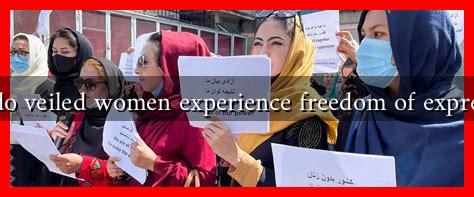-
Table of Contents
How Do Veiled Women Experience Freedom of Expression?
The concept of freedom of expression is often viewed through a Western lens, where the ability to speak, write, and express oneself is seen as a fundamental human right. However, for veiled women, particularly those who wear the hijab, niqab, or burqa, the experience of freedom of expression can be complex and multifaceted. This article explores how veiled women navigate their rights to express themselves in various cultural, social, and political contexts.
The Veil as a Symbol of Identity
For many women, wearing a veil is not merely a religious obligation but also a powerful expression of identity. The veil can symbolize cultural heritage, personal beliefs, and even political statements. Here are some ways in which veiled women express their identities:
- Cultural Heritage: In many cultures, the veil is a traditional garment that connects women to their ancestry and community.
- Religious Expression: For Muslim women, the hijab can signify devotion to their faith and adherence to Islamic principles.
- Political Statement: In some contexts, wearing a veil can be a form of resistance against Western imperialism or a statement of autonomy.
Challenges to Freedom of Expression
Despite the empowering aspects of wearing a veil, veiled women often face significant challenges that can hinder their freedom of expression. These challenges can be categorized into social, political, and economic barriers:
- Social Stigma: Veiled women may encounter prejudice and discrimination, leading to social isolation and limited opportunities for self-expression.
- Legal Restrictions: In some countries, laws prohibit the wearing of veils in public spaces, which directly impacts a woman’s ability to express her identity.
- Workplace Discrimination: Many veiled women face challenges in the job market, where employers may harbor biases against their appearance.
Case Studies: Diverse Experiences Across Cultures
The experiences of veiled women vary significantly across different cultural and political landscapes. Here are a few case studies that illustrate this diversity:
- France: The 2010 ban on full-face veils in public spaces has sparked debates about secularism and individual rights. Many Muslim women argue that this law infringes on their freedom of expression and religious rights.
- Iran: In Iran, the hijab is mandatory, and women who resist this law face severe penalties. However, many women find ways to express their individuality through fashion and style within the confines of the law.
- Turkey: The lifting of the ban on headscarves in public institutions in 2013 marked a significant shift in the political landscape, allowing women to express their religious identity more freely.
Empowerment Through Art and Activism
Many veiled women have turned to art and activism as powerful means of expressing their identities and challenging societal norms. This includes:
- Social Media: Platforms like Instagram and Twitter have become spaces for veiled women to share their stories, fashion, and opinions, creating a sense of community and empowerment.
- Artistic Expression: Artists like Shirin Neshat use visual art to explore themes of gender, identity, and cultural conflict, providing a voice for veiled women.
- Activism: Organizations such as the Muslim Women’s Network UK advocate for the rights of Muslim women, promoting their freedom of expression in various spheres of life.
Conclusion: Navigating Freedom of Expression
The experience of freedom of expression for veiled women is a complex interplay of identity, culture, and societal norms. While wearing a veil can be a powerful form of self-expression, it also comes with challenges that can limit a woman’s ability to express herself fully. As societies continue to evolve, it is crucial to recognize and respect the diverse experiences of veiled women, ensuring that their voices are heard and valued. By fostering an environment that promotes understanding and acceptance, we can help create a world where all women, regardless of their attire, can freely express their identities and beliefs.
For further reading on the topic, you can explore resources from organizations like Muslim Women’s Network UK.




